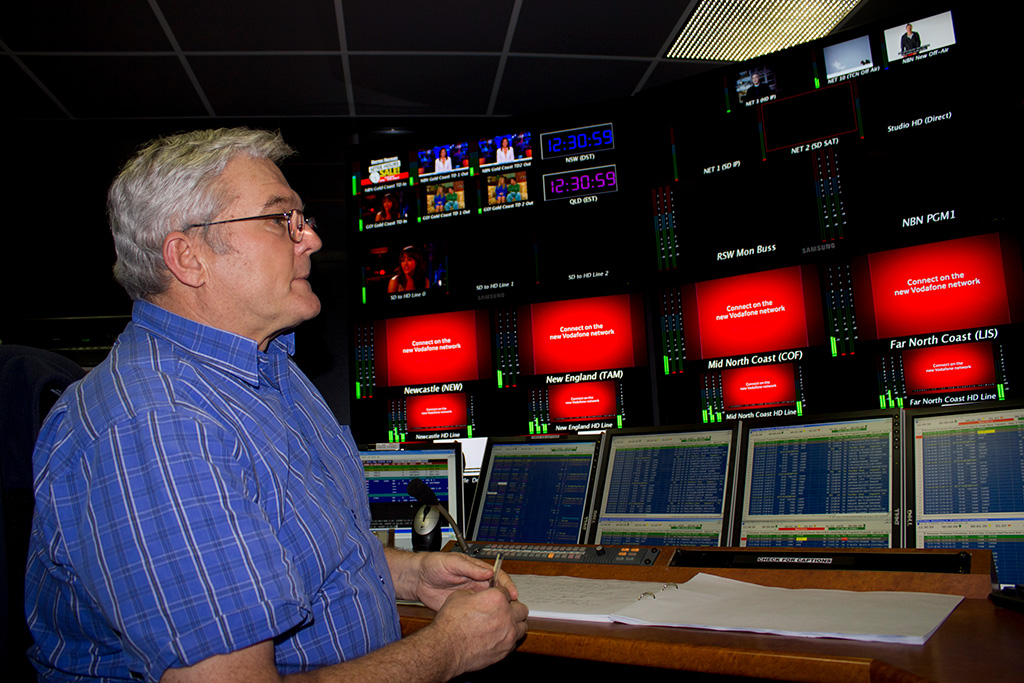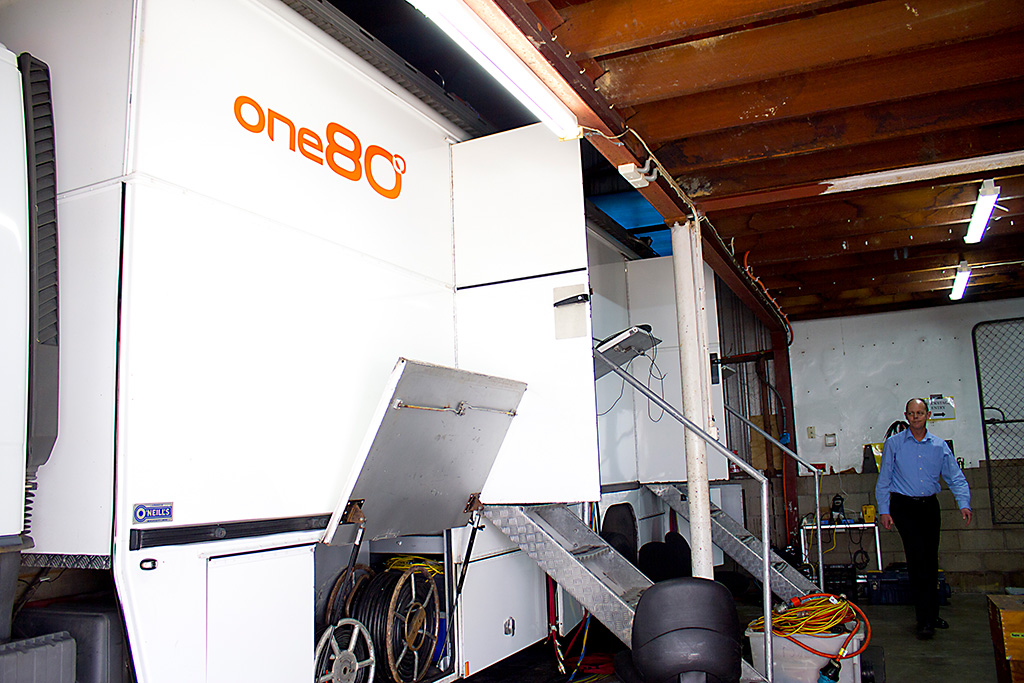The Gaffa Tapes
20 Oct 2022
The Gaffa Tapes: Broadcast Blues

Subscribe to CX E-News
Stop the press, I want to get off!
Returning home from my third interview for the position of Editor of a national broadcast magazine, and unsure of the outcome, I muttered to myself negatively, “Oh well, there’s always alcohol.” Days later the ringing phone excitedly heralded the imminent news that I had been awarded the position, which ultimately would bring about the same indulgent result.
The advertisement, which was listed as Journalist/Editor, led me to believe, naively, that I would be editing my own articles, not editing the entire magazine. This misconception later became the subject of some amusement especially when I related a bogus version of the story to a work colleague who then published my buffoonery in the company’s official journal: “Brian originally applied for the position of janitor, but so impressed management with his ability to change the paper towels in the men’s room that he was offered the position of Editor.”
Although the publication of this gag did little to enhance my stature, things hadn’t been looking too bright since my first day on the job when the Associate Publisher took me to a nearby cafe, and over coffee told me, “Don’t worry, your job is safe, but they’re trying to scrap the magazine because it’s in the red.”
I soon became aware that I was in the employ of an organisation awash with low morale and a large staff turnover. The hierarchy consisted of Publisher, Associate Publisher/Ad Guy, and Editor. My first publisher was eventually replaced; my second publisher was sacked, and some time later the departure of the Associate Publisher/Ad Guy left me in sole charge of the magazine, which, ironically, was now back in the black.
There was no shortage of bizarre incidents that occurred under the roof of this establishment (now defunct), but for me the most bizarre was when I was summoned to the office in my second year by my third publisher who demanded an explanation for an article I had included in the magazine.
“This is plagiarism,” she said, slamming the magazine down on the desk and adding, “I’ve just been down to see this advertiser, and I happened to show them your article as an example of how we supported their products; and they informed me it’s their article from their own magazine.”
“That’s correct,” I said.
“Well, aren’t you ashamed?” she insisted.
“No, it’s a press release. They sent it to me for publication, and as you can see I didn’t by-line it.”
“But you’ve added graphics and you have a different headline.”
“Yes, that’s what we do with press releases.”
A long silence ensued, but there was never any apology.
My love of the broadcast industry and writing about it became my only solace during those harrowing years wherein I passionately pursued new innovations like the MPEG-4 AVC (Advanced Video Coding) codec, which hadn’t yet gained notoriety as a broadcast codec. I also wrote prolifically about the advancements being made by Inmarsat, especially their BGAN (Broadband Global Area Network), which could connect a laptop computer in a remote location—even a desert—to the broadband network worldwide via satellite.

Australian digital TV was introduced in January 2001, only two years prior to my first edition as Editor, and there was plenty to write about with the debate raging as to why Australia was so slow to embrace the new digital technology with only a 28% take-up. Questions were also being raised as to why television stations, reluctant to broadcast HDTV, had to be forced by law to transmit 1,040 hours of native HD content per year, and the ‘Cash For Comment’ affair once again raised its ugly head.
HD was the buzzword of that era, but there was an abundance of furphies about the technology. Sales staff selling big screen HD televisions, some not up to specifications, talked glowingly about how their customers could watch Australian sports on the big screen in full HD, when sports in Australia at the time were only broadcast in SD (Standard Definition). Such broadcasts were only possible with high definition OB (Outside Broadcast) vans, and the only HD OB vans in Australia belonged to One80 Digital Post stationed at the NBN Television studios in Newcastle, NSW. And it was One80 that went on to shoot the Eagles Farewell 1 Tour in Melbourne in 2004 in HD (1080i).

One of the last bastions where one was allowed to consume alcohol during work hours was journalism. And whilst the office drinking culture was in decline, if not taboo by the end of the 20th century, journalists were exempt. They were free to attend alcohol fuelled functions where they could gain an insight into important publishing content. My initial Associate Publisher/Ad Guy would drag me along (not that I minded) to these functions, dangling the carrot of free editorial to his clients while trying to sell them advertising space in the magazine. I found it amusing that he was a teetotaller, if not a borderline abolitionist, who would give me chiding looks across the table, but reluctantly had to abandon his austere principals to attend such functions.
I managed to ditch my Associate Publisher for a memorable Sony function in 2004; he would never have understood the difficulty of trying to modify one’s drinking habits when you find a waiter standing at the ready with a white napkin draped over his arm pouring one of the better red wines while you dined on grilled Barramundi flown in fresh from Central Queensland.
After this exquisite Sony dining experience all the guests were ushered to an adjacent room and treated to a show by Sony’s humanoid entertainment robot. However, it was I that probably had the greater fuzzy logic, and after years of telling all and sundry that I had seen a live performance of ASIMO, which was Honda’s robotic creation, I realised I had in reality seen Sony’s QRIO robot

Rarely in the past had I imbibed during work hours, but back at the office the editorial flow was often thwarted by recalcitrant departments within the organisation, and the pressure would build until I’d find myself exchanging my editor’s chair for a bar stool at the local RSL.
I was soon to find I was not alone at the bar. There were other dissidents that met regularly, and the only excuse for a premature departure was those immortal words, “I’m on deadline.” Meanwhile, the breathalyser in the lobby, which was supposed to encourage restraint, became a tool of competitive folly for those returning to work, so much so that the RSL removed it.
I won’t dwell on the subversive practices of autonomous departments that were detrimental to the publication, but management always seemed oblivious to the problems, and reluctant to resolve them. At one particular function, which my wife also attended, she was asked covertly by management, “What do you think about your husband’s drinking habits?” And she replied, “He never drank like that before he worked for your company.”
Subscribe
Published monthly since 1991, our famous AV industry magazine is free for download or pay for print. Subscribers also receive CX News, our free weekly email with the latest industry news and jobs.




